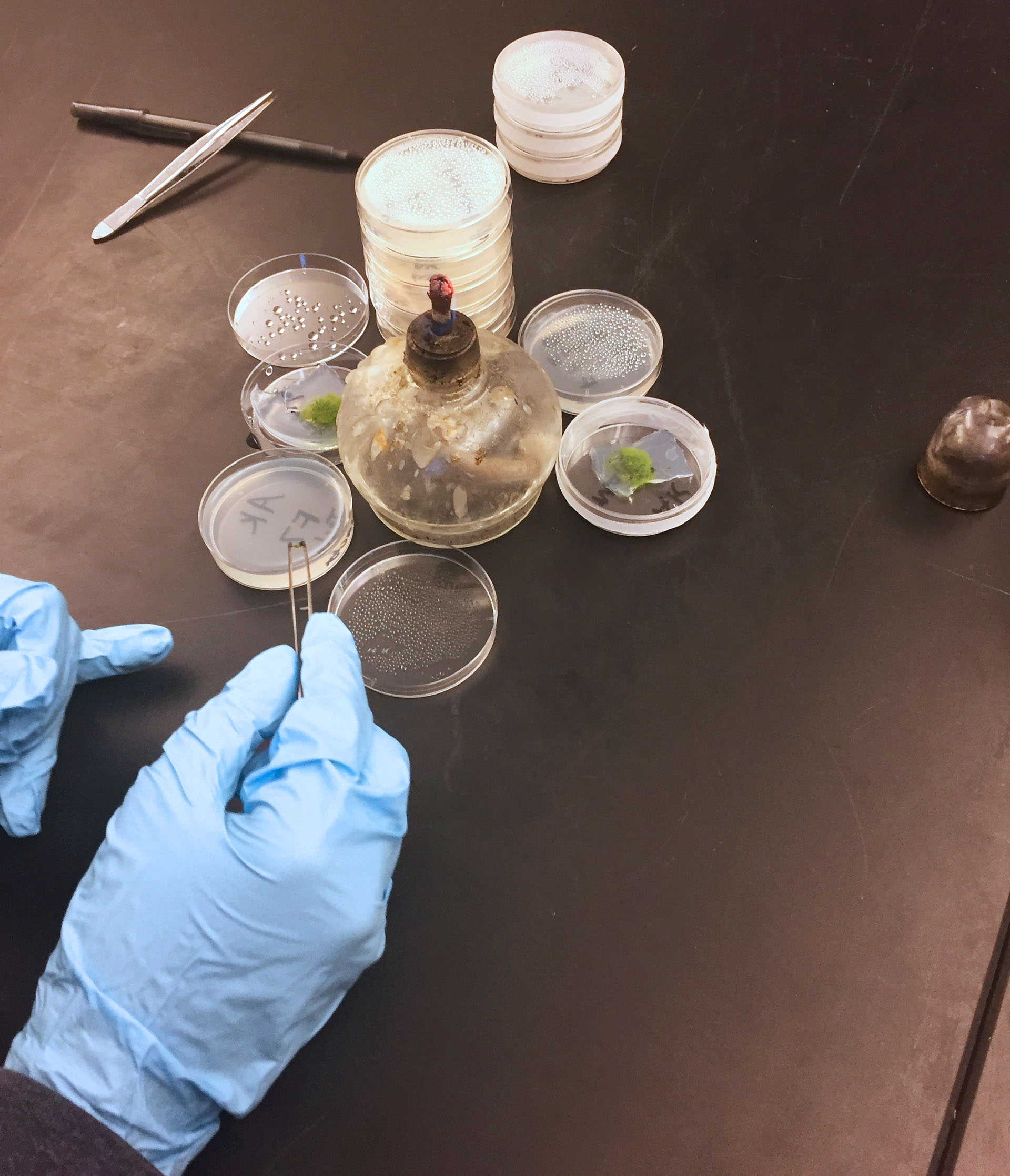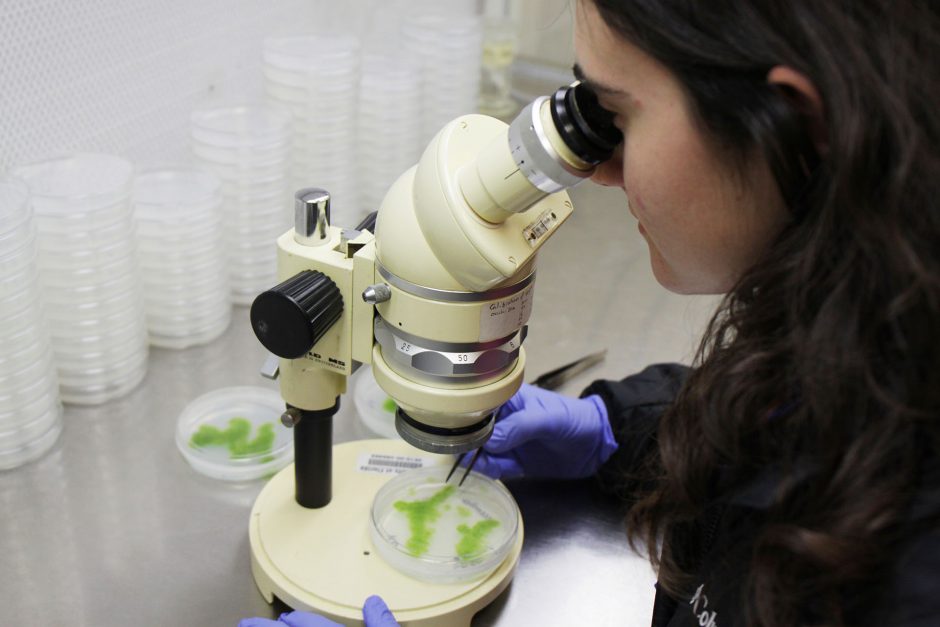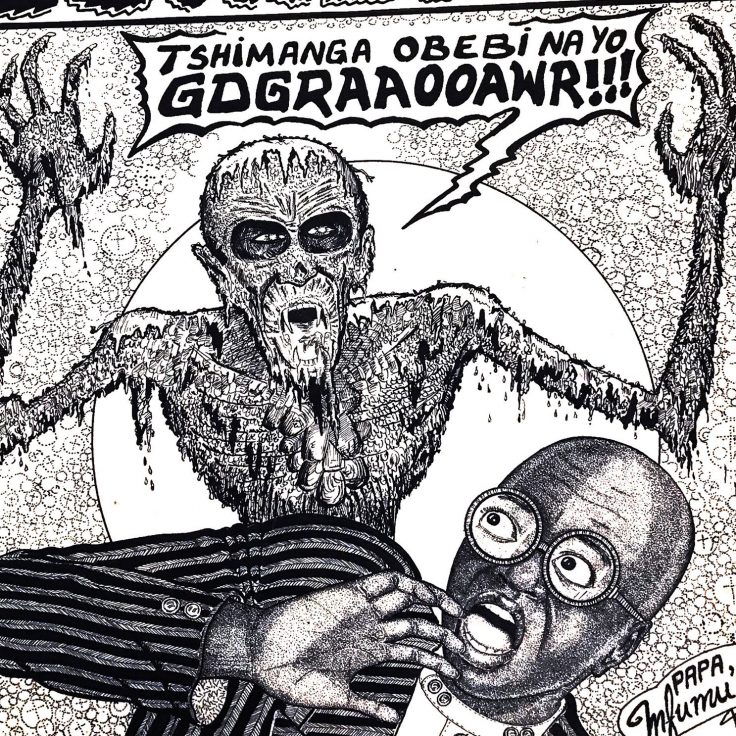
Ceratodon purpureus has a worldwide range and even grows in Antarctica.
Lil’ Mosses
Undergraduate students learn both plant genetics and data analysis in an immersive botany class.
In the fall 2017 semester, 55 students in BOT 2010, an introductory botany course, worked on their green thumbs by growing fire moss (Ceratodon purpureus). The class included a mix of majors, and even those who weren’t budding botanists found something to love in the project. “It was truly a class about science, but it isn’t just for people who are science-related majors,” says Emily Gordon ’21, a biology major who now plans to add a second major in plant science to her path. “It was a really personal, small class and had majors from biology, to landscape design, to journalism, to linguistics.”
Sarah Carey PhD, a graduate student working with botany professor Stuart McDaniel in his lab, developed the idea for the experiment. Typically, the BOT 2010 term projects had involved flowering plants, but this presented a space issue for the lab. Carey, who says she specializes in mosses, realized that “mosses would be the perfect thing because they’re very small, and you could have lots and lots of replication in a very small space — replication is very important for biological experiments,” she says.
 Ceratodon purpureus typically does not exceed 1.3 cm in height.
Ceratodon purpureus typically does not exceed 1.3 cm in height.“From this perspective stems these studies and research that reveal just how complex and marvelous plants actually are.”
“The McDaniel lab has been translating some of the lab’s core research initiatives into research-based experiences for the BOT 2010 students,” says postdoc Lily Lewis, the course instructor working with McDaniel. “The research involves growing tiny moss plants and determining if the sex or population origin of each moss affects how fast the mosses grow.” The students grew their own mosses and compared their rates of growth to the plants’ genetic profile. All groups studied the effect of their plants’ sex on their growth rate, but each group had mosses from a different geographic area. At the end of the semester, they presented their findings in a poster symposium. In the breezeway of Newins–Zigler Hall, excitement filled the cool November air as the students eagerly approached passersby to tell them about their “lil’ mosses.”

The small, fuzzy green plants have a unique aesthetic that was not lost on the students, who showed a great appreciation for them. “What intrigues me about botany is that it focuses more on plants rather than on how plants can be useful for humans,” says Palmer Crippen ’20, who is double majoring in plant studies and visual studies. “From this perspective stems these studies and research that reveal just how complex and marvelous plants actually are.” Gordon agrees: “I’ve always enjoyed plants, doing gardening on my own time, and just appreciating their aesthetic. I was interested in learning about the science of something I already loved, and possibly doing so in a fun and casual environment.”
Horticulture aside, students also learned data analysis and the programming language R. “We asked, ‘How can students gain skills from us that will be useful in their career paths?’” says Carey. It was a new but crucial achievement for many students. “It was difficult at first to understand what the measurements I received actually meant,” says Daniela Menendez ’21. “Once I grasped the concept, I was able to make more rational assumptions, which led me to consider what a future project with the mosses may look like. Overall, it was an incredible experiment, and I would love to do it all over again.”

